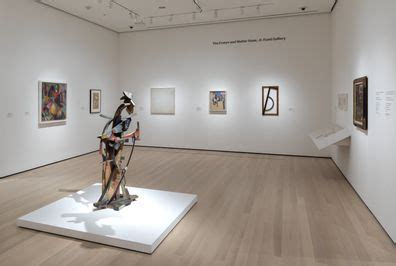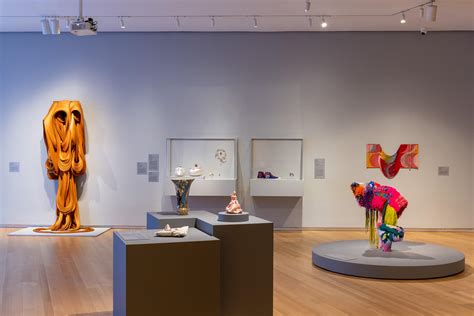The Museum of Modern Art (MoMA) in New York City stands as a beacon of innovation and creativity in the art world. Established in 1929, MoMA has been at the forefront of showcasing groundbreaking art and fostering cultural dialogue. This comprehensive guide will delve into what makes MoMA a must-visit destination, from its rich history and unique approach to modern art to its world-renowned collections and exhibitions. Whether you’re a seasoned art aficionado or a curious visitor, this guide will help you navigate the museum’s offerings and plan an unforgettable visit to one of the most influential art institutions globally.
Join gamesfats.com for a detailed examination of this topic.
1. Why The MoMA Museum Matters
The MoMA Museum holds a pivotal role in the art world due to its dedication to modern and contemporary art, making it an influential cultural institution. Established in 1929, it was one of the first museums to focus on modern art, and its mission to collect, conserve, and exhibit groundbreaking works has shaped the trajectory of art history. MoMA’s impact is evident through its collection, which includes masterpieces by artists such as Vincent van Gogh, Pablo Picasso, and Andy Warhol, reflecting the evolution of art movements over time. The museum not only preserves and showcases these pivotal works but also serves as a platform for innovative exhibitions and emerging artists. Its commitment to education and public engagement further cements its importance, as it provides a space for dialogue and understanding of contemporary issues through art. MoMA’s influence extends beyond its walls, continually inspiring and challenging perceptions of art and culture.

2. How The MoMA Museum Was Founded
The Museum of Modern Art (MoMA) was founded in 1929 by a group of influential New Yorkers, including Abby Aldrich Rockefeller, Lillie P. Bliss, and Mary Quinn Sullivan. Their vision was to create a museum dedicated exclusively to modern art, a concept that was groundbreaking at the time. Initially located in a rented space on 57th Street, MoMA quickly gained recognition for its innovative approach and impressive collection. The museum’s first director, Alfred H. Barr Jr., played a crucial role in shaping its direction, emphasizing the importance of contemporary art and the need to reflect the rapidly changing art landscape. MoMA’s founding marked a significant shift in the art world, establishing a new standard for museums and providing a platform for modern artists to reach a broader audience. Its early commitment to showcasing and preserving modern art set the stage for its continued influence and success.

3. What Makes The MoMA Museum Unique
The MoMA Museum is unique for several reasons that distinguish it from other art institutions. Firstly, its pioneering focus on modern and contemporary art was groundbreaking when it was founded, making it a trailblazer in its field. MoMA’s collection includes some of the most significant works of the 20th and 21st centuries, featuring masterpieces by artists such as Vincent van Gogh, Pablo Picasso, and Frida Kahlo. The museum’s innovative approach to curating and exhibiting art allows for dynamic and thought-provoking presentations that challenge traditional boundaries.
Another aspect that sets MoMA apart is its commitment to interdisciplinary connections, blending visual art with design, architecture, and media. This holistic approach fosters a deeper understanding of how modern art intersects with various aspects of life and culture. MoMA’s emphasis on education and public engagement through lectures, workshops, and interactive programs further enhances its role as a cultural hub. Additionally, the museum’s architectural evolution, including its recent expansions, reflects its ongoing commitment to embracing change and innovation. These elements together create a distinctive and influential institution that continues to shape the art world.

4. Why Visit The MoMA Museum
Visiting The MoMA Museum offers a unique opportunity to experience some of the most influential and innovative works of modern and contemporary art. The museum’s collection includes iconic pieces by renowned artists such as Vincent van Gogh, Pablo Picasso, and Andy Warhol, providing a comprehensive overview of artistic evolution over the past century. MoMA’s dynamic exhibitions and programs offer visitors fresh perspectives on art and its role in society, making each visit a new and enriching experience.
Beyond its impressive collection, MoMA’s commitment to education and public engagement ensures that visitors can deepen their understanding of art through lectures, workshops, and interactive installations. The museum’s architecture itself is a work of art, with its recent expansions reflecting a blend of modern design and functionality.
Additionally, MoMA’s central location in New York City makes it an accessible and integral part of a cultural itinerary. Whether you are an art enthusiast, a casual visitor, or someone looking to explore new cultural dimensions, MoMA provides a memorable and inspiring experience that highlights the significance of modern art in today’s world.
5. How to Navigate The MoMA Museum
Navigating The MoMA Museum can be an enriching experience with a bit of planning. Begin by obtaining a map or using the museum’s mobile app, which provides interactive guides and exhibition details. The museum is organized into distinct sections, including galleries dedicated to painting, sculpture, design, and media. Start your visit by familiarizing yourself with the museum’s layout, which is divided into floors that each feature different types of art.
The museum’s entrance is on 53rd Street, and upon entry, you’ll find the information desk where staff can assist with any questions or provide additional resources. Highlights to consider include the main collection galleries, which showcase masterpieces, and the temporary exhibitions, which offer fresh perspectives on contemporary art.
To make the most of your visit, plan ahead and check the museum’s schedule for special events, tours, and educational programs. MoMA also offers guided tours that provide in-depth insights into the museum’s collections. Additionally, take advantage of the museum’s rest areas and cafes to enhance your visit. With a bit of preparation, navigating MoMA will lead to an engaging and rewarding art experience.
6. What Art Collections to Look For
When visiting The MoMA Museum, several art collections are must-sees for any art enthusiast. The museum’s collection includes iconic works by renowned artists such as Vincent van Gogh’s “The Starry Night,” which exemplifies his innovative approach to color and form. Pablo Picasso’s “Les Demoiselles d’Avignon” is another highlight, showcasing his groundbreaking work in Cubism.
MoMA also features significant works by other influential artists, including Salvador Dalí’s surrealist masterpiece “The Persistence of Memory” and Andy Warhol’s “Campbell’s Soup Cans,” which revolutionized the concept of pop art.
In addition to these famous pieces, the museum’s design and architecture collection is notable for its exploration of modern design principles. The sculpture galleries present works by artists like Henri Matisse and Alexander Calder, offering a diverse range of three-dimensional art.
The museum’s film and media collection is equally impressive, including influential works that highlight the intersection of art and technology. Exploring these collections provides a comprehensive view of modern art’s evolution and its impact on contemporary culture.
7. Why The MoMA Museum’s Exhibitions Stand Out
The MoMA Museum’s exhibitions stand out due to their innovative approach and ability to present art in dynamic and thought-provoking ways. Unlike traditional museum exhibitions, MoMA often integrates multiple art forms, including visual arts, design, film, and media, creating interdisciplinary experiences that reflect the interconnectedness of modern culture.
The museum’s commitment to showcasing cutting-edge contemporary art is evident in its temporary exhibitions, which frequently highlight emerging artists and new movements. These exhibitions are curated with a focus on relevance and engagement, often exploring timely themes and social issues through art. MoMA’s exhibitions are designed to challenge visitors’ perceptions and encourage deeper reflection on contemporary issues.
Moreover, the museum employs state-of-the-art technology and interactive elements to enhance the visitor experience. This includes multimedia presentations, immersive environments, and interactive installations that make the art more accessible and engaging. The integration of educational programs and artist talks further enriches the exhibitions, offering visitors a comprehensive understanding of the art and its context.
This forward-thinking approach ensures that MoMA’s exhibitions not only display art but also foster meaningful dialogue and connection with the audience.
8. How to Plan Your Visit to The MoMA Museum
Planning a visit to The MoMA Museum requires a few key steps to ensure a smooth and enjoyable experience. Start by checking the museum’s official website for current hours, admission fees, and any special events or exhibitions. MoMA often offers timed entry tickets, so purchasing tickets in advance can help avoid long lines and ensure entry during peak times.
Consider downloading the museum’s mobile app or obtaining a map upon arrival to help navigate the galleries and exhibitions. Review the museum’s layout and plan which collections and exhibitions you want to prioritize.
If you’re interested in guided tours or educational programs, book these in advance as they can provide deeper insights into the art and enhance your visit.
Allow time to explore the museum’s amenities, including cafes and rest areas, to make your visit more comfortable. Lastly, check for any special accessibility options or services if needed. With these preparations, you can fully enjoy the rich offerings of MoMA and make the most of your visit.
A visit to The MoMA Museum offers an unparalleled opportunity to engage with modern and contemporary art in a world-renowned setting. From its influential collections and dynamic exhibitions to its innovative approach and educational programs, MoMA stands as a beacon of artistic excellence. Planning your visit with these insights will ensure a memorable and enriching experience.
gamesfats.com

